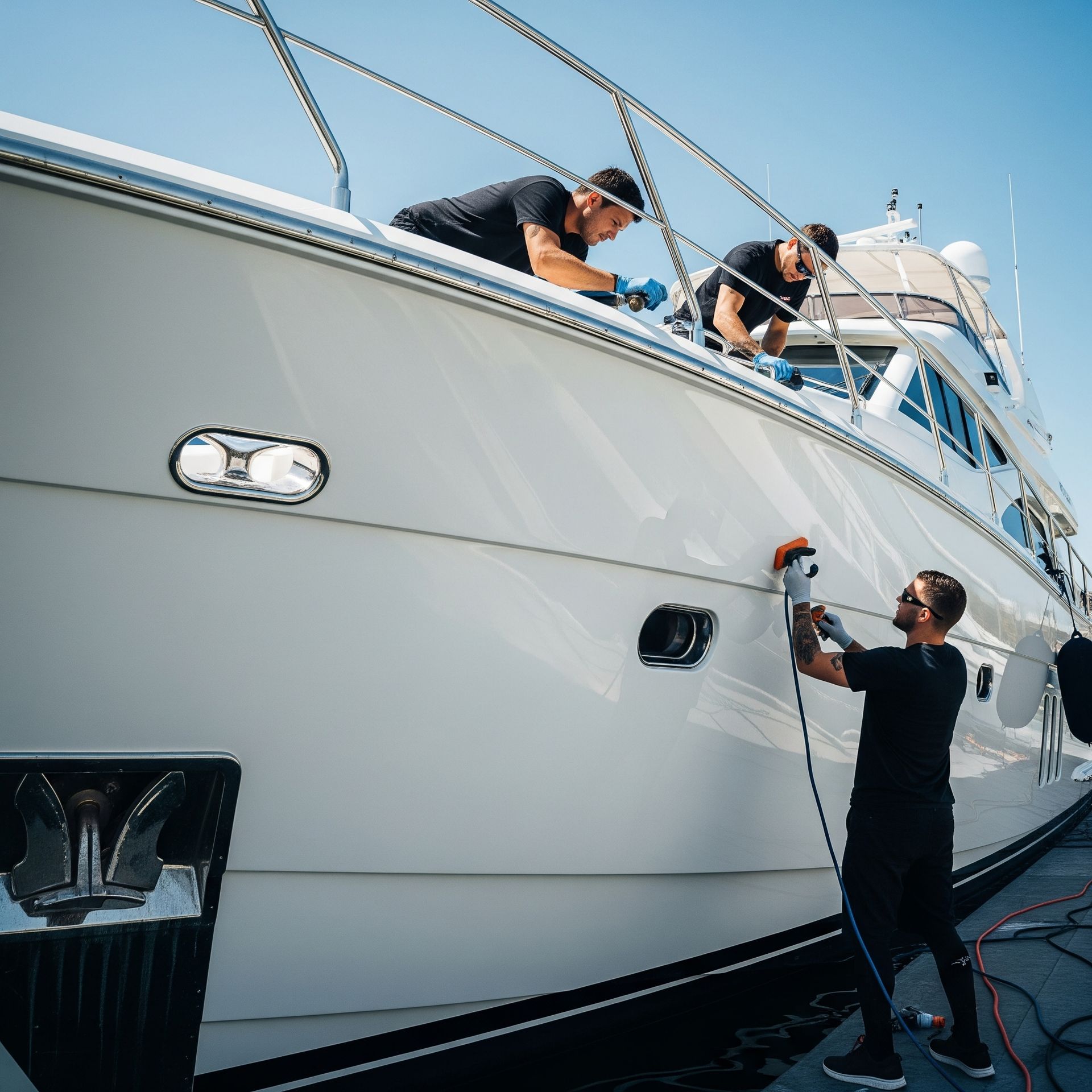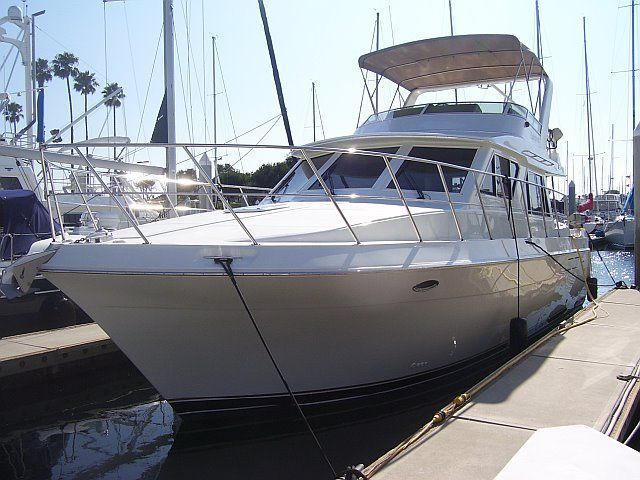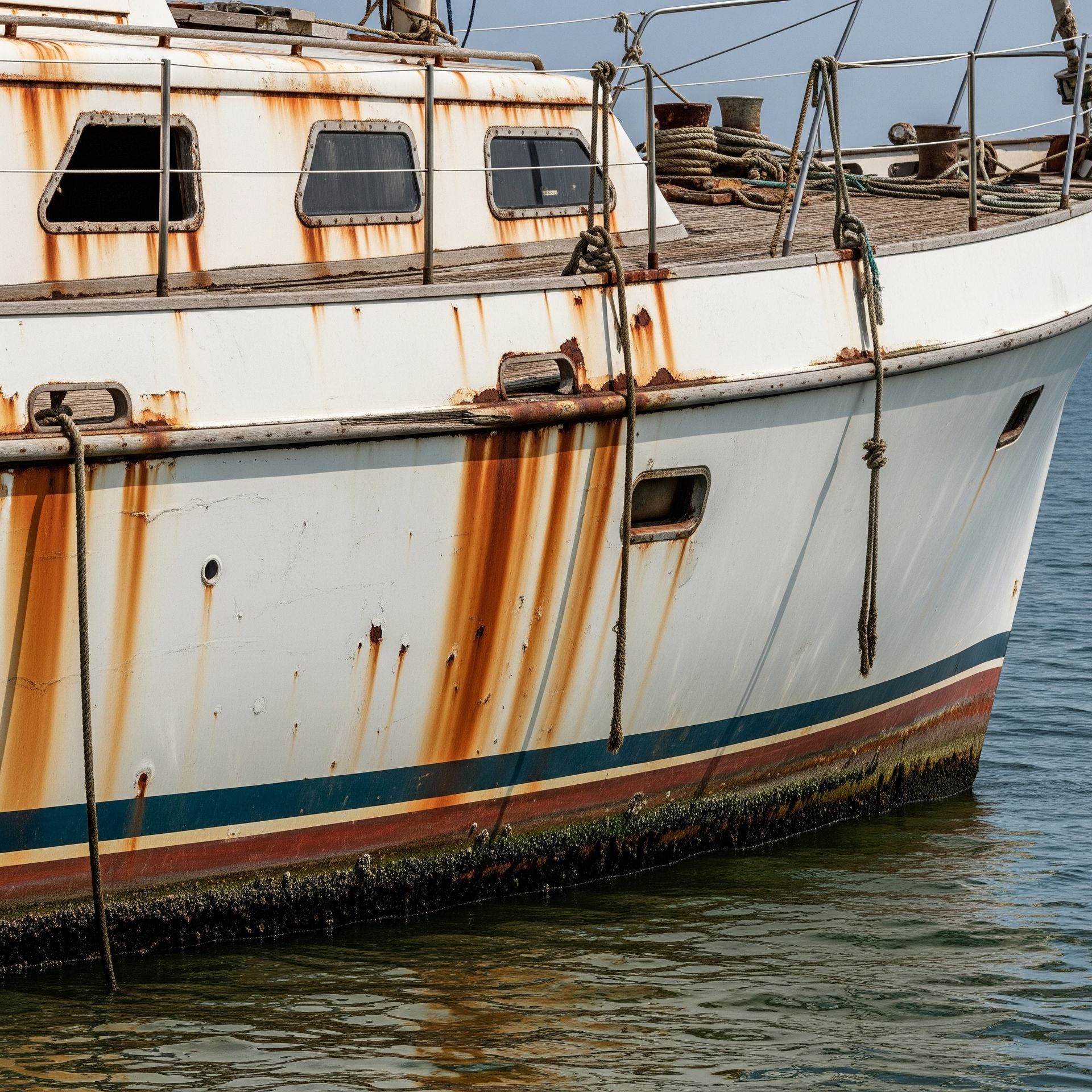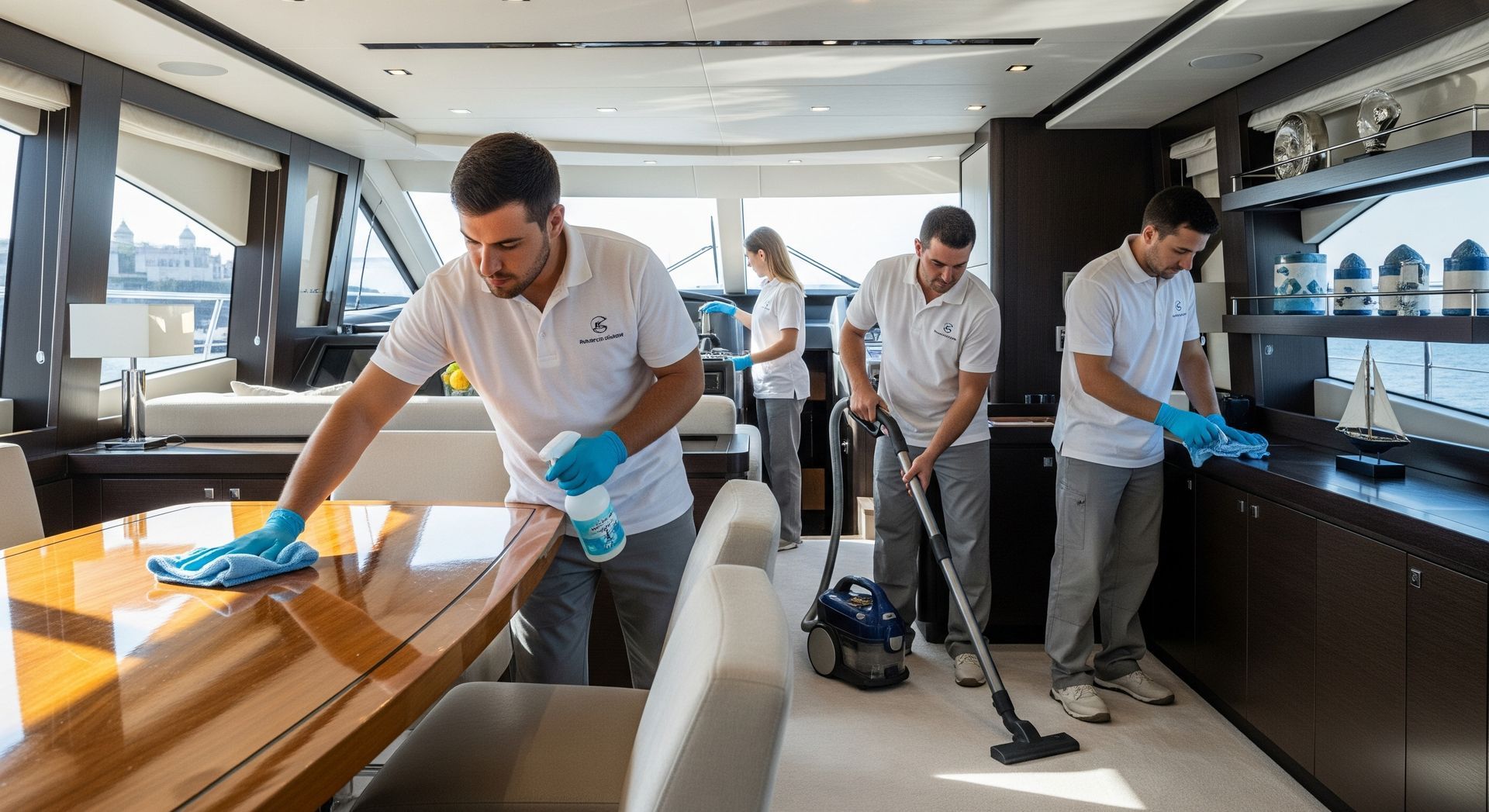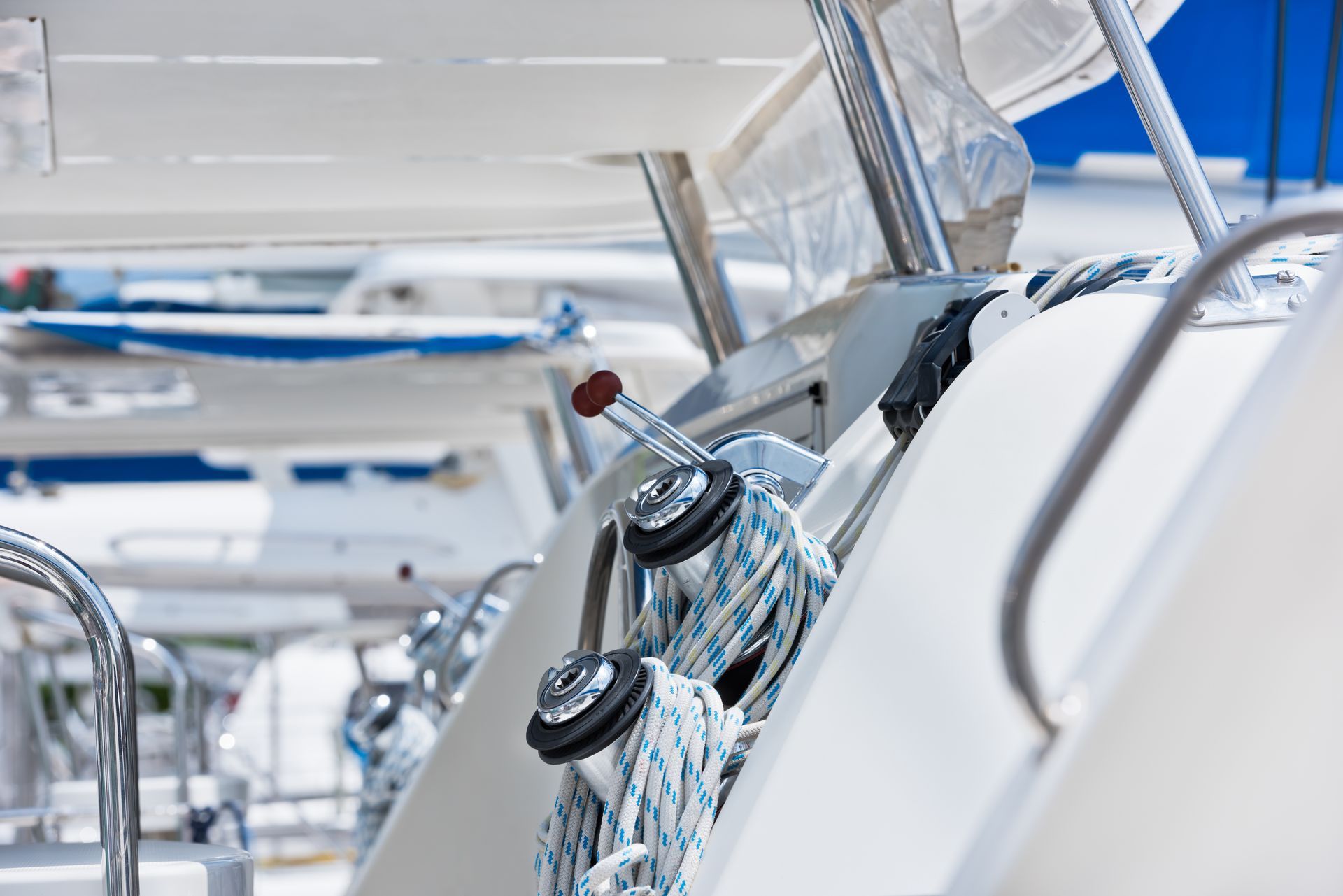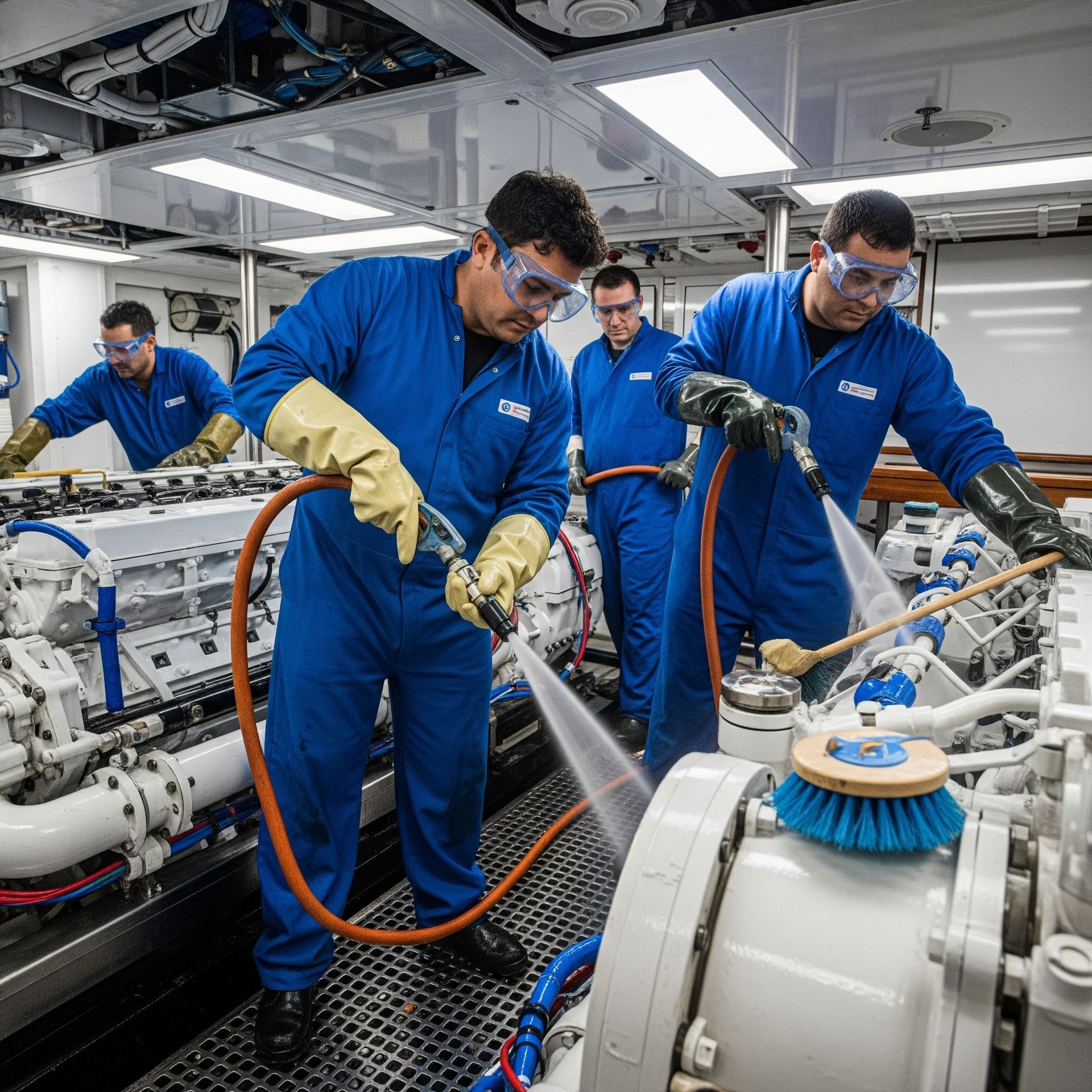Gelcoat Vs Paint: Which Needs More Maintenance?
If you’re wondering whether gelcoat or paint demands more TLC, gelcoat tends to be the low-maintenance champ—it's tougher, resists fading, and needs fewer touch-ups.
Paint can look great but usually wants more frequent cleaning and polishing, especially in sun or saltwater. Both need some care, but paint can be a bit finicky. Stick around, and you'll get the full scoop on keeping both looking sharp without breaking a sweat.
Key Takeaways
- Gelcoat requires less frequent maintenance than paint due to its thicker, more durable protective layer against sun and water damage.
- Paint surfaces demand weekly cleaning and regular touch-ups to prevent fading, chipping, and wear from environmental exposure.
- Gelcoat repairs involve resin mixing and curing, needing fewer touch-ups but a higher initial repair effort and cost.
- Paint touch-ups are simpler but may require more frequent attention due to lower resistance to scratches and UV damage.
- Overall, gelcoat maintenance is less frequent and more cost-effective long-term, while paint needs more consistent upkeep and repairs.
Understanding Gelcoat: Composition and Uses
Gelcoat is like the skin of your boat or fiberglass project, giving it a smooth, shiny finish that also protects it from the elements.
When you look closer, gelcoat composition mainly includes polyester or epoxy resins mixed with pigments and additives. This combo not only gives your boat that glossy look but also shields it from sun, water, and wear. Think of it as your boat’s sunscreen and raincoat rolled into one!
Gelcoat applications aren’t just limited to boats—you’ll find them on pools, surfboards, and even some outdoor furniture. It’s perfect whenever you want a durable, attractive surface that stands up to tough conditions.
So, when you take care of your gelcoat, you’re basically pampering your vessel’s skin, keeping it healthy and looking sharp.
Being part of this community means you get the best tips to maintain that shine and protect your investment, making every outing a proud moment on the water.
Overview of Paint Types for Boats and Vehicles
When it comes to painting your boat or vehicle, you’ve got a few common types to choose from, each with its own style and toughness.
Some paints stick around longer and shine brighter, while others might need a bit more TLC to keep looking sharp.
Let’s chat about which finishes hold up best and what you can expect when it comes to durability and sparkle.
Common Paint Varieties
Choosing the right paint for your boat or vehicle can feel like stepping into a candy store—there are just so many options!
You’ve got common paint types like enamel, acrylic, and polyurethane. Enamel is great if you want something affordable and easy to apply, but it might need more touch-ups.
Acrylic dries fast and is user-friendly, perfect if you’re new to paint application. Polyurethane, on the other hand, offers a glossy finish and holds up better against scratches, although it can be a bit trickier to work with.
Each type has its own vibe, and knowing which one suits your project makes all the difference. So, take your time, think about how you’ll apply it, and soon you’ll be part of the crew who knows their paint game!
Durability and Finish
Toughness and looks go hand in hand when it comes to paint for boats and vehicles, so you’ll want to know what each type brings to the table.
Durability factors like resistance to UV rays, saltwater, and scratches vary widely between paints. For instance, polyurethane paints offer a glossy finish quality that stays vibrant longer, but they might need more upkeep.
On the other hand, epoxy paints are super tough and great at protecting against chips, though their shine may fade faster.
You’re part of a crew that wants both style and strength, so picking paint with balanced durability factors and finish quality matters.
In the end, your choice keeps your ride looking sharp and ready for adventure, without constant fussing over touch-ups.
Durability Comparison: Gelcoat Versus Paint
When you’re choosing between gelcoat and paint, you’ll want to think about how long each one can tough it out under rough conditions.
Gelcoat usually holds up better against sun and water without fading, but paint can surprise you if it’s high quality.
Let’s see which one really sticks around and keeps your ride looking sharp.
Longevity Under Harsh Conditions
Even if you’re not a boat expert, you’ve probably heard that gelcoat and paint handle rough weather differently. When you’re out there facing sun, salt, and storms, weather resistance is key.
Gelcoat tends to hold up better because it’s thicker and designed to protect the fiberglass underneath. Paint looks great but usually needs more touch-ups to keep its charm. Plus, gelcoat’s environmental impact can be lower since it lasts longer without needing constant recoating.
Here’s a quick look:
| Feature | Gelcoat |
|---|---|
| Weather Resistance | High |
| Maintenance Needed | Low |
| Environmental Impact | Lower due to durability |
Choosing gelcoat means less worry and more time enjoying the waves with your crew.
Resistance to Fading
A good chunk of boat owners worry about their ride losing that fresh, vibrant look over time, and honestly, who can blame them?
When you’re choosing between gelcoat and paint, one big thing to think about is how well each handles fading factors like sun, salt, and water.
Gelcoat usually shines here, offering better color retention because it’s part of the boat’s surface, not just a layer on top.
Paint can look great at first but often needs more touch-ups since it’s more vulnerable to fading and chalking.
If you want your boat to keep turning heads without constant upkeep, gelcoat might be your best friend.
But hey, a little love and care go a long way no matter what you pick!
Cleaning and Maintenance Requirements for Gelcoat
Taking care of gelcoat isn’t rocket science, but it does need a bit of regular love to keep it looking sharp. You’ll want to get familiar with some simple cleaning techniques, like using mild soap and water or a gentle boat cleaner.
Avoid harsh scrubbing or abrasive pads—they can mess with the surface and dull that shiny finish you’re aiming to keep. A soft brush or sponge usually does the trick.
As for maintenance frequency, it’s a good idea to give your gelcoat a quick wash every couple of weeks if you’re out on the water often. For deeper cleaning or polishing, a few times a year should be enough.
This routine helps prevent dirt buildup and keeps the gelcoat’s protective layer intact, so you don’t have to worry about more serious fixes later.
Think of it like tending a garden—small, consistent efforts make a big difference, and you’ll feel proud showing off that smooth, glossy finish to your crew.
Cleaning and Maintenance Requirements for Paint
You’ll want to clean your painted surfaces at least once a week if your boat spends a lot of time in the sun or saltwater. Salt and UV rays can be sneaky, breaking down your paint surface faster than you’d like.
Grab a gentle soap made for boats and a soft sponge—harsh scrubbing will wear down that paint protection you’re counting on. After rinsing, dry off with a clean cloth to avoid water spots that can dull the finish.
Keeping the paint surface free of dirt and grime not only makes your boat look sharp but also helps the paint protection last longer.
Once in a while, apply a marine-grade wax or polish; think of it as a sunscreen for your boat’s paint. It shields against fading and keeps everything gleaming.
Staying on top of these simple steps means your boat will keep turning heads without needing constant TLC. It’s like giving your paint a little hug now and then!
Repair and Touch-Up Processes for Gelcoat and Paint
When it comes to fixing up scratches or chips, gelcoat and paint each have their own little quirks.
With gelcoat repair, you usually need to mix a resin and hardener, then carefully apply it to the damaged spot. It takes some patience since you have to let it cure fully before sanding and polishing to blend it in nicely. It’s a bit like cooking a delicate recipe, but once you get it right, the finish looks smooth and lasts long.
On the other hand, paint touch up is often quicker and simpler. You just grab a matching paint, dab it on, and let it dry. Sometimes a quick buff after can make your repair nearly invisible.
Paint can be more forgiving, but matching colors perfectly can be tricky—so take your time with that.
Both methods need a steady hand, but with a little care, your boat or car will look fresh and cared for, keeping you part of that proud maintenance crew.
Cost Implications of Maintaining Gelcoat and Paint
Although both gelcoat and paint can keep your boat or car looking sharp, they come with different price tags when it comes to upkeep. When you do a cost analysis, gelcoat tends to demand more upfront investment for repairs, especially if cracks or chips appear.
But on the bright side, gelcoat lasts longer between major touch-ups. Paint, on the other hand, might cost less initially but often needs more frequent attention, which can add up over time.
If you’re smart about maintenance budgeting, you’ll factor in these differences. Gelcoat’s durability means fewer surprises but pricier fixes when needed.
Paint requires more regular care, so you’ll spend on supplies or professional work more often. Knowing this helps you feel confident in your choice and keeps your wallet happy.
Frequently Asked Questions
Can Gelcoat or Paint Be Applied Over the Other?
You can't just apply paint over gelcoat without prep because gelcoat compatibility affects paint adhesion. To join our community of boat lovers, you’ll want to sand and prime surfaces carefully for lasting results.
How Do Weather Conditions Affect Gelcoat and Paint Longevity?
You’ll feel like weather’s trying to erase your boat overnight! Weather impact heavily shapes longevity factors for gelcoat and paint, so you’ve got to protect your pride and joy, keeping it vibrant and bonded to your boating family.
Are There Eco-Friendly Gelcoat or Paint Options Available?
You’ll find green alternatives using sustainable materials in both gelcoat and paint. Choosing these eco-friendly options helps protect the environment and connects you with a community committed to responsible, sustainable boating and maintenance practices.
Which Finish Offers Better UV Protection, Gelcoat or Paint?
You want UV resistance, you want longevity comparison—gelcoat usually wins. It offers stronger UV protection, helping your finish last longer. Together, you and gelcoat’ll enjoy enduring beauty and lasting performance under the sun.
Does the Application Process Differ Significantly Between Gelcoat and Paint?
You’ll find the application techniques differ quite a bit—gelcoat demands thorough surface preparation and spraying skills, while paint allows more forgiving brush or roller methods. Embrace these steps to achieve a flawless finish together!
Final Thoughts
So, when it comes to gelcoat vs. paint, maintenance is kinda like choosing between watering a cactus or a fern—both need care, but one’s definitely fussier.
Gelcoat’s tough but demands special cleaning and repairs, while paint might need more frequent touch-ups but is easier to fix. Knowing this helps you keep your ride looking sharp without losing your mind. Just pick what fits your style and patience, and you’ll be golden!
If you need help restoring the shine and beauty of your boat, give us a call. We offer expert yacht detailing services in San Diego and surrounding areas.
Share this article
